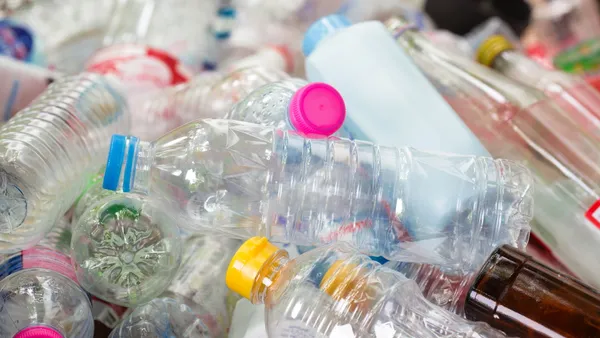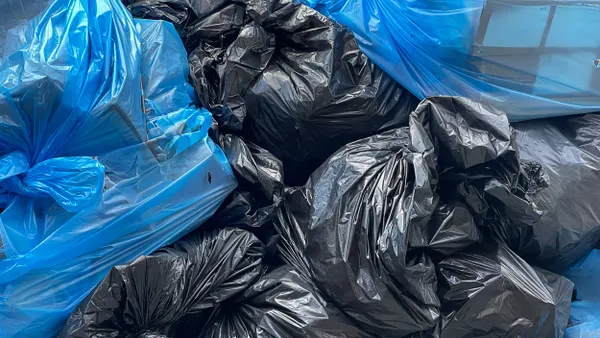Dive Brief:
- The EPA reported a slight increase in the national recycling rate — up to 34.7% from 34.6% — based on 2015 data in the latest Advancing Sustainable Materials Management report. The agency estimates that out of the 262 million tons of MSW generated, 52.5% went to landfills, 25.8% was recycled, 12.8% was combusted via WTE facilities and 8.9% was composted.
- Based on percentage of generation, lead-acid batteries, corrugated boxes, steel cans and newspapers had the highest recycling rates. The report also noted a small uptick in yard waste and food composting (not including backyard operations) and a decrease in the weight of consumer electronics recycled.
- Multiple prior iterations of this report cited the reduction of greenhouse gas emissions and "toxic chemicals" as well as the fact that recycling "conserves resources for future generations" as benefits. Those mentions were all missing from the 2015 report. A new section on job creation and tax revenue was included.
Dive Insight:
While viewed as an imperfect metric of true generation and recycling statistics in the U.S. for a variety of methodological reasons, the EPA's "Facts and Figures" reports are still an eagerly awaited piece of the national recycling conversation. Their release usually runs on a two-year lag, though that has now widened due to the presidential transition and other factors.
Now that the EPA's sustainable materials management work appears to be on track after the initial agency shake-up under Scott Pruitt, officials have been sharing more information about future plans at events such as this year's Measurement Matters Summit and SWANApalooza. That includes interest in measuring contamination rates as well as ongoing efforts to standardize data and encourage voluntary reporting from states. Until that happens, the statistics in these annual releases will still be based on top-down material flow estimates rather than bottom-up facility reports.
These estimates still provide valuable information on trends that can influence priorities for government at all levels, for example around areas such as food waste. Though they also provide less clarity on the changing composition of packaging streams and how that is likely affecting weight totals. That is particularly important when looking at changes in per capita waste generation as it correlates to personal consumer expenditures trends.
Such economic considerations have always been important to the recycling conversation, but are even more so now that the recent model has been upended by China's scrap import restrictions. While China isn't mentioned in the report — and wasn't yet a pressing issue in 2015 — the inclusion of a 25-year commodity price chart is new. Multiple pages on job and tax revenue benefits from recycling are also new. In contrast, the 2016 data being cited came out at the same as the last "Facts and Figures" report but wasn't mentioned in it then.
Emphasizing this information over greenhouse gas reductions, or consideration for the Earth's long-term health, is in line with President Trump's environmental agenda. Though it also presents a different narrative than the one coming from the waste industry's largest companies about how they view recycling as more of a secondary service to meet sustainability desires rather than a core moneymaker. The two are of course not mutually exclusive, and opinions vary on what the future of recycling will look like in the years ahead.
A key passage from the EPA's latest report raises the possibility that this can still be framed in terms of holistic economic benefits for the country at large, with environmental benefits serving as a means to that end: "Global competition for finite resources is expected to continue to increase. A more productive and less impactful use of materials helps our society remain economically competitive, contributes to our prosperity and protects the environment."











